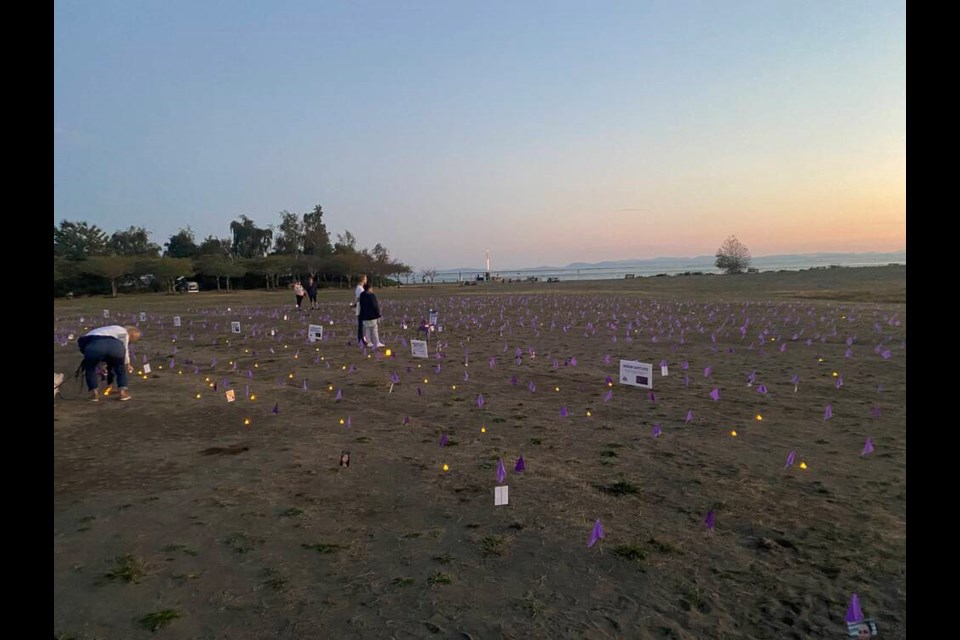Steveston’s Garry Point Park was lit up in candlelight on Thursday evening to mourn lives lost to toxic drugs.
More than 1,400 purple flags fluttered in the wind during the vigil, each representing a person who died from toxic drugs this year.
“It’s just heartbreaking. Every death is too many,” said organizer Debbie Tablotney.
Tablotney’s son, Curtis, passed away from drug poisoning last December.
The candlelight vigil, organized by Tablotney on behalf of Moms Stop the Harm, was held to commemorate International Overdose Awareness Day and mourn the lives lost to the toxic drug crisis.
So far in 2023, 1,455 people have passed away from toxic unregulated drugs according to data from B.C. Coroners Service. An average of 6.4 people died per day during July with a total of 198 deaths recorded.
It is the highest number of deaths so far within the same time period. This included two people in Richmond, bringing the total number of deaths to 14 this year in the city. Last year, 1,361 people died within the first seven months.
“To know that someone else is going through what we went through. And I always feel like (Curtis) slipped through my fingers, and I can’t imagine how other parents are feeling,” Tablotney told the Richmond News.
More support and better accessibility to resources needed
The most pressing issue at hand, she said, is to put all information and resources on a centralized website to make it easier for everyone to find help.
The Tablotneys recently found out about the Richmond Assertive Community Treatment (ACT) Team, which supports clients living with “complex mental health or concurrent mental health and substance use disorders in their community.”
Through speaking with community members at the vigil, Tablotney also found that most are unaware that life-saving naxolone kits can be collected for free at pharmacies.
In addition to making information more accessible, Tablotney thinks more follow-up is needed for people struggling with addiction.
“(Someone) may have an overdose, they go to the hospital, (the hospital lets) them out and they’re not followed up enough,” she said.
“It might be every six weeks. That’s not enough because they go in and out of readiness to get help.”
Curtis Tablotney’s girlfriend of seven years, Fernanda Sanchez, has also been struggling to find support groups to help her with her grief.
“I (have) never heard of a solid group (for people who lost someone to toxic drugs),” she said.
Sanchez added that although there are groups such as Moms Stop the Harm, there is no publicity for groups open to a more general audience.
“We need to talk, we need to put it all outside, we need to cry … because it’s so hard every day,” she said, “Our hearts (have) such a big hole.”
Sanchez met Curtis when she had gotten lost in a SkyTrain station. He offered to help her, and the two became inseparable ever since.
They got engaged last February, just months before his death.
“(It’s not) easy to put the stuff of your family in a plastic box and to say bye. That’s not nice… And to forget and only remember when it’s the anniversary or something? … No,” said Sanchez.
“Curtis was everything for me… I know that he was there for me and he (knew) that I was there for him.”



